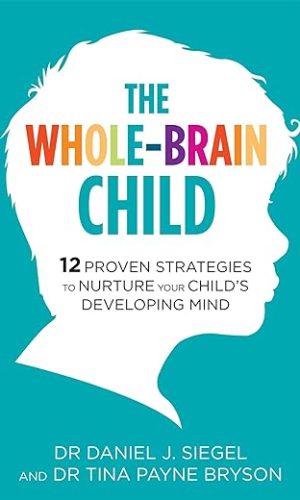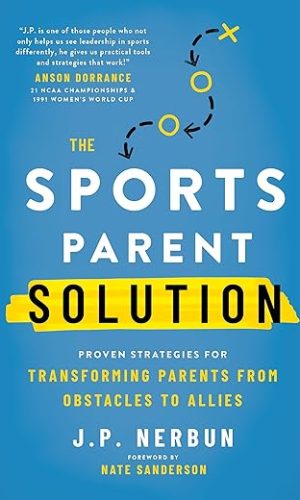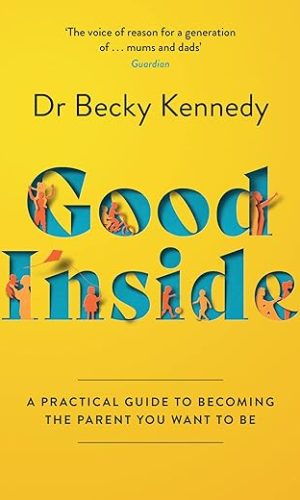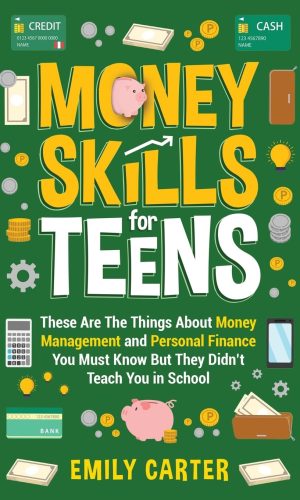The Explosive Child [Sixth Edition]: A New Approach for Understanding and Parenting Easily Frustrated, Chronically Inflexible Children
£10.30£12.30 (-16%)
Now in a revised and updated 6th edition, the groundbreaking, research-based approach to understanding and parenting children who frequently exhibit severe fits of temper and other challenging behaviors, from a distinguished clinician and pioneer in the field.
What’s an explosive child? A child who responds to routine problems with extreme frustration—crying, screaming, swearing, kicking, hitting, biting, spitting, destroying property, and worse. A child whose frequent, severe outbursts leave his or her parents feeling frustrated, scared, worried, and desperate for help. Most of these parents have tried everything-reasoning, explaining, punishing, sticker charts, therapy, medication—but to no avail. They can’t figure out why their child acts the way he or she does; they wonder why the strategies that work for other kids don’t work for theirs; and they don’t know what to do instead.
Dr. Ross Greene, a distinguished clinician and pioneer in the treatment of kids with social, emotional, and behavioral challenges, has worked with thousands of explosive children, and he has good news: these kids aren’t attention-seeking, manipulative, or unmotivated, and their parents aren’t passive, permissive pushovers. Rather, explosive kids are lacking some crucial skills in the domains of flexibility/adaptability, frustration tolerance, and problem solving, and they require a different approach to parenting.
Throughout this compassionate, insightful, and practical book, Dr. Greene provides a new conceptual framework for understanding their difficulties, based on research in the neurosciences. He explains why traditional parenting and treatment often don’t work with these children, and he describes what to do instead. Instead of relying on rewarding and punishing, Dr. Greene’s Collaborative Problem Solving model promotes working with explosive children to solve the problems that precipitate explosive episodes, and teaching these kids the skills they lack.
Read more
Additional information
| Publisher | Harper Paperbacks, 4th edition (14 Oct. 2021) |
|---|---|
| Language | English |
| Paperback | 272 pages |
| ISBN-10 | 0063092468 |
| ISBN-13 | 978-0063092464 |
| Dimensions | 13.49 x 1.73 x 20.32 cm |

![The Explosive Child [Sixth Edition]: A New Approach for Understanding and Parenting Easily Frustrated, Chronically Inflexible Children](https://www.paperbackbooks.co.uk/wp-content/uploads/2023/11/the-explosive-child-sixth-edition-a-new-approach-for-understanding-and.jpg)








by Graeme Carter
Overall, this was a really helpful book to have read. It helped me to see that “normal” approaches were pretty much worthless at this point, and that I was going to have to plan things more. Also, that some of the things I was doing that seemed to “work”, would be even better with some refinements. It gave really good examples (eventually!) on what to do.
I did begin to worry at one point that, like some other books, it was describing my child really well, but wasn’t going to get on to concrete actions. It did get there though! Maybe a really good test of these is that, while I’ve read the book, my wife hasn’t yet, and her interactions are unchanged while mine have gotten much better.
If I had one or two criticisms to make, I guess the first would be the in-book stories, the fictional accounts of the parents. One reason I don’t like them is that they are very easy, and make progress really quickly…the book makes it clear that this is a journey and won’t just fix relationships overnight, but the examples more or less yield immediate results. I get that they are a fictional narrative to aid in applying the techniques, but it still stuck out.
The other thing about the stories…the men are completely useless, aggressive morons, who scream and hit their kids. And the women want to fix everything and are just caring by nature, while manipulating people around them in to trying new things, instead of explaining their value or presenting their need clearly. It’s more than a little out of date with the gender roles.
Ignore the stories, pay attention to the techniques, and do your best to prioritize problems and build up these skills with your kid…and it will be really good.
One final note – the examples are aimed at kids around 12 to 16, though the techniques do seem to apply to all age groups. That wasn’t super clear for me. My son just turned 5, so I feel like starting this so early will mean the 12+ ages will be…smoother. Maybe not smooth, just not as bad as they could have been!
by Holly
I just had to write a review for this book so I can share with others how wonderful it is. I ordered a few ‘parenting’ books to help me with my child who has ODD. This stands out by a mile and I wish I hadn’t bought the others.
The author will take your hand and guide you through why your child is behaving in such difficult ways. He then guides you through the solution. It’s changed the entire way I think of my child and his behaviour. He’s 13 and I wish I had this book at least 5 years ago. It would have saved a lot of screaming, shouting and destruction. And more than that, it would have helped me to really understand my child. To be on his side, rather than against him. It would have helped me to brush off criticism about me being a bad parent and to shrug off people telling me to punish him harder (punishments don’t work with children like this, and they make things worse as you’ll probably know).
This book is kind. It doesn’t make you do anything that instinctively feels wrong as a loving parent. It’s kind to the parents and it’s kind to the children.
I’m already putting into practice the steps he guides you through, and it’s already helping.
I’m so grateful to have found this book and I think just in the nick of time, as I was about to spend a lot of money on therapy which tbh my child was refusing to go to anyway!
Buy this book and reclaim your relationship with your child. I can’t put it clearer than that.
by Kat
Caveat: I haven’t implemented the strategies in the book yet. When I first started reading it, my plan was to do it as I went along, and I did do the first step (identifying lagging skills). However, as I was reading sections out to my partner – without the context they came in – I found I was spending a lot of time getting frustrated and defending the book as he struggled to understand the concepts without the background reading. As we need to have a whole family approach to this method, we agreed that implementation would go on hold until he has a chance to read it. I will update my review once we’ve started, and let you know if my rating has changed.
The book was recommended to me by a number of people, but I must say the title put me off a little. I advocate for neurodiversity, I’m autistic and ADHD myself and have been subjected to people calling me “dramatic” or “over-reactive” in the past, so a book called “The Explosive Child” made me feel like a child was being blamed for their responses to things. However, I trust the people who recommended it to me, and over a year after buying it I started to read. I now know why you should never judge a book by its cover (or its title).
Dr Greene makes it abundantly clear throughout the book that “kids do well if they can,” that they are not deliberately “explosive” and that preconceived notions of children behaving in certain ways to being manipulative, attention-seeking, lazy, unmotivated, etc need to be left behind. He’s also quick to clarify that parents aren’t to blame either, and that most have tried incredibly hard to help their children and only want what’s best for them, they just have been on a misguided path, or haven’t had the tools to help.
So, if it’s not wilful bad behaviour, and kids will “do well if they can,” what’s the problem?
Lagging skills, and unsolved problems.
These were a complete eye opener for me. Not only do my children score incredibly highly on the lagging skills list, I do too! We are all “explosive,” we all could be termed “behaviourally challenging” (a term that Dr Greene does admit isn’t perfect, but it’s better than most of the other available ‘labels’) and I now know why. We simply (though it’s not simple to change) don’t have the skills a lot of other people have to cope with demands, problem solving, maintaining focus, handling transitions and change etc. I’m not going to list them all – you’ll have to read the book for that – I will say that out of twenty-four lagging skills listed on pages 34 & 35, I have fifteen. I’m not sharing my children’s scores as it’s not my data to share, but I was shocked that I scored so highly. The good news is that by following the suggestions in the book, my lagging skills will be improved over time in conjunction with my children’s. How cool is that?
Greene goes on to talk about the “truth about consequences,” which tend to be the go-to parenting strategies (and the cornerstone of unsolicited advice, usually given alongside lines such as “making a rod for your own back,” and “in my day, children got a good slap.”) Needless to say, Greene asserts that traditional parenting methods using consequences and a “do as I say” attitude doesn’t work. Let’s face it, if it did, you wouldn’t be reading the book. There’s a lot more to it than the example I’ve given but, again, you’ll need to read the book.
Following these truths, Greene describes the three plans which parents can (though possibly shouldn’t in one case) use to address unsolved problems with their children:
Plan A – “Solving a problem unilaterally through the imposition of adult will.” Spoiler alert: this is what you’re probably doing already, and it’s unlikely to work with children (and adults) who have a number of “lagging skills” – if it did, you wouldn’t have any unsolved problems.
Plan B – “Solving a problem collaboratively.” Sorry, another spoiler: this is the whole point of the book, and the plan that you’re encouraged to follow. The rest of the book talks you though how to do this with your child – including a section on how to collaboratively problem solve with children who have little or no spoken communication.
Plan C – “Setting aside an unsolved problem, at least for now.” This isn’t “giving up.” It’s not “letting the child ‘win.'” It’s deciding that some unsolved problems are not high priorities, and they are ones you’ll come back to later. This doesn’t mean that you use Plan A for them in the interim – you literally set them aside. I know I’m going to struggle with this part, but reading the rationale behind it, I know it’s important I do.
The rest of the book talks you through Plan B: the hows, whens, whats, and whos. There’s a chapter dedicated to talking you though how Plan B would work in a school setting, and I think it’s an important book for educators to read.
The main points I’ve taken away are:
– That quote I’ve already used: “Kids do well if they can.”
– Behaviours which challenge aren’t designed to manipulate, and they’re not because a child ‘can’t be bothered’ to do what’s being asked of them.
– Plan A – the style that’s adopted by the majority of adults – doesn’t help a child solve problems more effectively.
– Plan A teaches a child that they must submit and do what they’re told at all cost.
– Plan B ensures that everyone’s needs are met.
– Unsolved problems and lagging skills are the issue, not the child or their behaviours.
– Adults need to learn how to actively listen to children.
– That just because we’ve struggled with all of this, it doesn’t mean I’m a bad parent, or that they’re bad kids.
I highly recommend this book to all parents, and those who work with children. Particularly if your child has episodes of behaviours which challenge, but actually this approach will (I think) be good for all children.
One thing (from an autistic perspective) that struck me was how opposite to ABA it is, but how it will address the same ‘issues’ (for want of a better word). Therefore, I’m going to add the book to my list of “things which are better than ABA” when I’m asked for alternatives, both from desperate parents and from argumentative people on the internet.
For ND readers: I didn’t like the phrase “behaviourally challenged” – Dr Greene doesn’t really either. However, it doesn’t affect what’s being said, and the message clearly tells me that the skills and methods presented in the book align with our philosophies. It’s not about changing a child, making them fit in, or blaming them for behaviours. It’s about collaborating so all parties have their needs met, therefore reducing the number of explosive episodes. It’s about wholeheartedly listening to the child (or adult if it’s two adults using the strategy) and being equally responsible for coming up with a solution, and nobody’s idea being considered more valuable than the other’s. If you can get past the label, and can excuse a couple of mentions of “with an Autism Spectrum Disorder,” then I think you will agree with the overarching principles, and find them a useful tool.
by Bryan
One of the best books I’ve read of it’s type, this can really help if you are struggling with a reactive child, or interacting with anyone. It really does, be open to it, embrace the processes it suggests. Enjoy it.